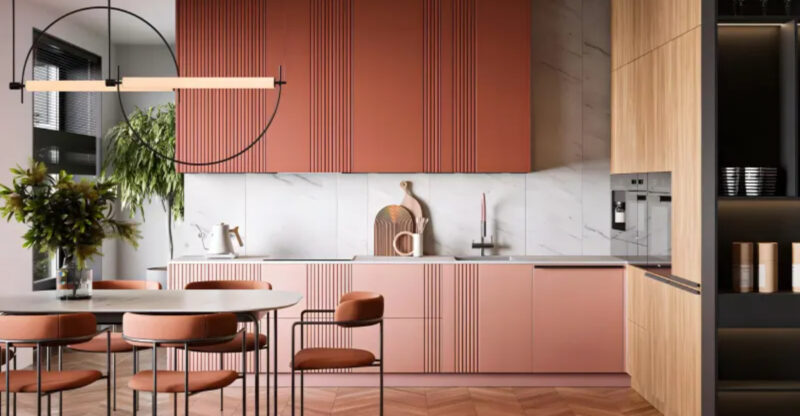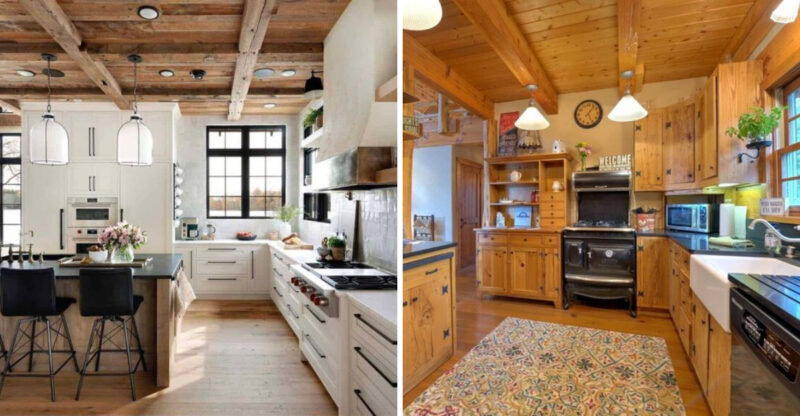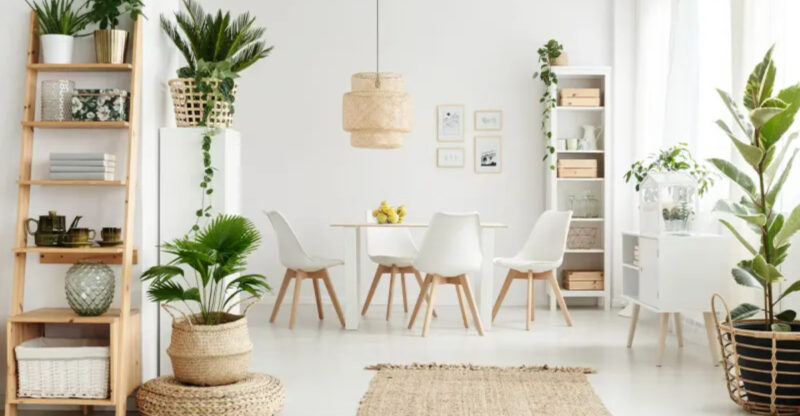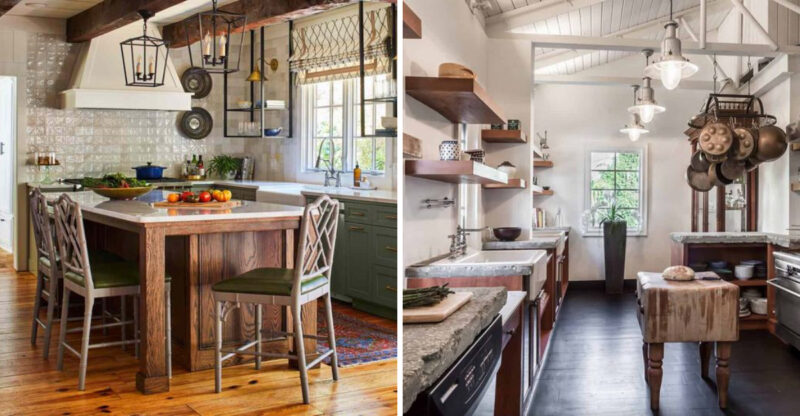From Lighting To Finishes 20 Details That Elevate Your Home’s Look
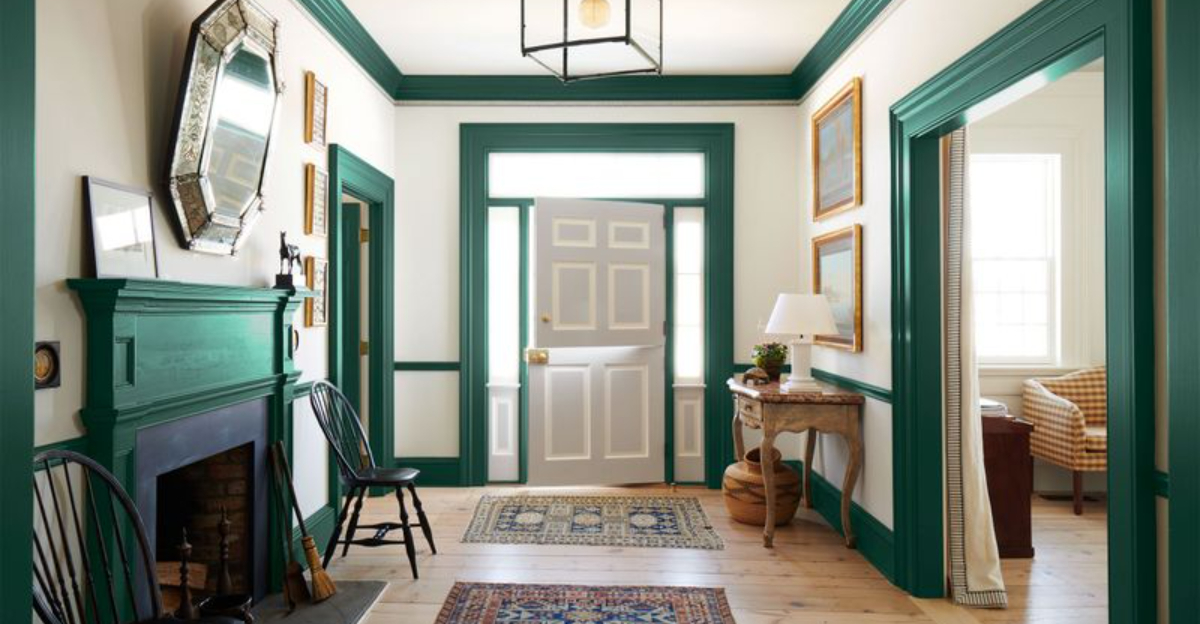
Ever noticed how some homes just feel more polished than others? It’s rarely about expensive furniture or size it’s the small details that make the difference.
Little touches like thoughtful lighting, quality hardware, and carefully chosen finishes can transform an ordinary space into something special.
These 20 design elements might seem minor individually, but together they create that magazine-worthy look that makes guests ask, “Who decorated your place?”
1. Statement Chandeliers
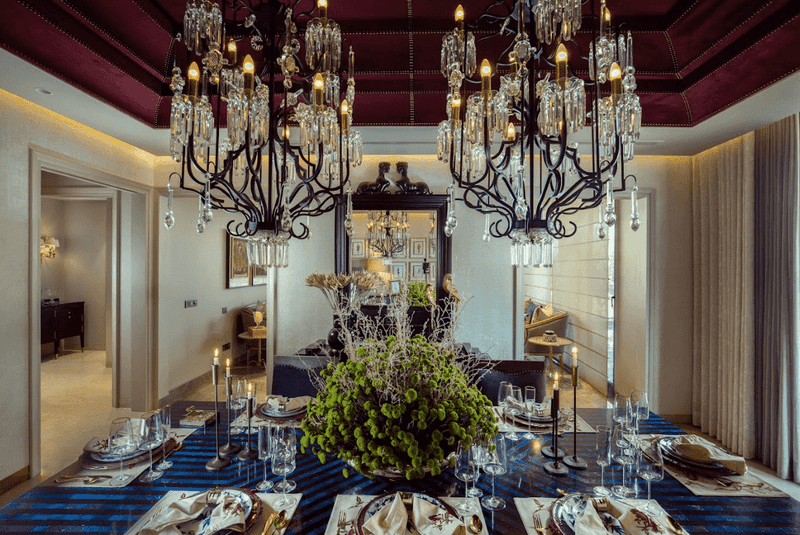
Walking into a room with a gorgeous chandelier immediately draws your eye upward, creating drama and setting the tone for the entire space. Think of these lighting fixtures as jewelry for your ceiling they’re meant to sparkle and command attention!
Statement chandeliers work beautifully in entryways, dining rooms, and even unexpected places like bathrooms or walk-in closets. The right chandelier can tie together your design theme, whether you prefer crystal for traditional elegance, industrial metal for a modern loft, or natural materials for a coastal vibe.
When selecting your showstopper, consider scale carefully too small and it disappears, too large and it overwhelms the space. The bottom should hang approximately 30-36 inches above your table for perfect proportion.
2. Dimmer Switches for Lighting
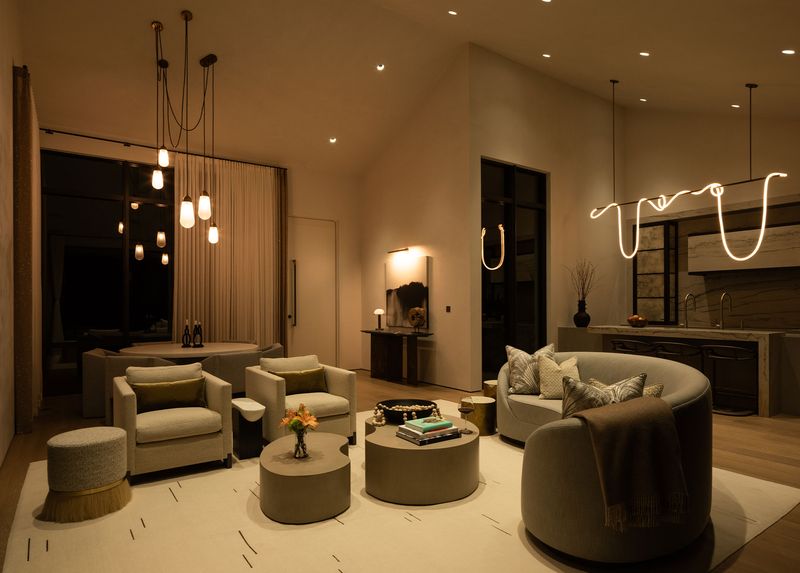
Mood matters in home design, and dimmer switches give you ultimate control over atmosphere. With a simple slide, you can transform bright task lighting into soft, ambient illumination perfect for evening relaxation or dinner parties.
Installing dimmers throughout your home allows customization for every activity and time of day. Morning might call for bright, energizing light while evenings benefit from a warmer, softer glow. These affordable upgrades work with most lighting types, though you’ll need specific dimmers for LED bulbs.
Beyond the practical benefits, dimmers extend bulb life and reduce energy consumption. The initial cost is minimal (typically $15-25 per switch) but the impact on your home’s ambiance is significant. Smart dimmers offer even more control through voice commands or smartphone apps.
3. Crown Molding
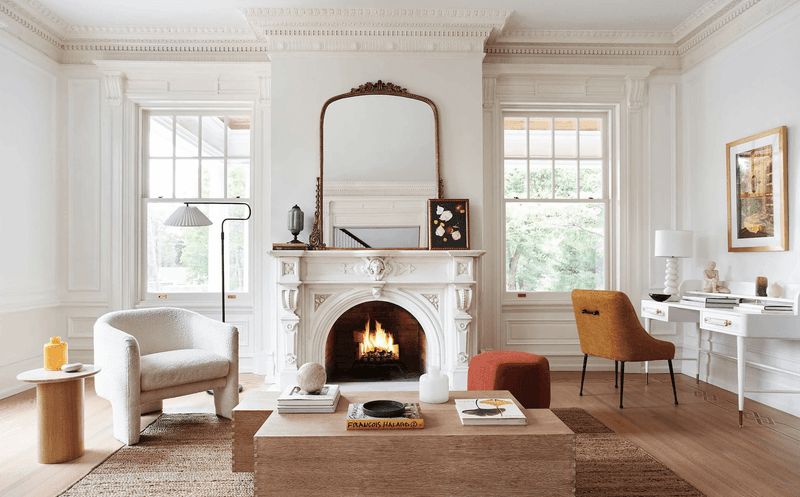
Architects have used crown molding for centuries to create visual transitions between walls and ceilings. This seemingly simple trim detail adds architectural interest that makes rooms feel instantly more finished and sophisticated.
When selecting crown molding, consider your ceiling height and room size. Taller ceilings can support wider, more elaborate profiles, while smaller rooms benefit from simpler, narrower designs. Materials range from traditional wood to budget-friendly polyurethane options that look nearly identical once painted.
If you’re feeling adventurous, painted crown molding in a contrasting color can create dramatic definition. For a classic look that never goes out of style, white molding against colored walls remains the gold standard. Even basic builder-grade homes can look custom with this relatively affordable upgrade.
4. High-Quality Cabinet Hardware
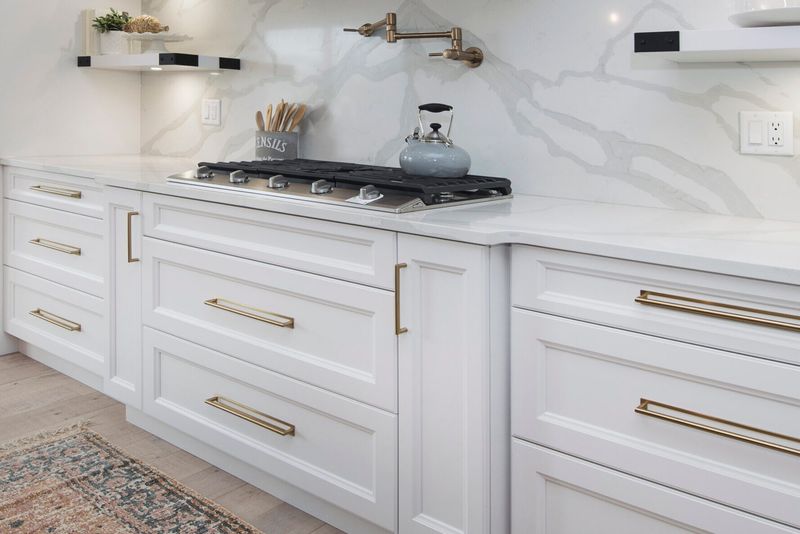
Cabinet knobs and pulls are like the earrings and necklaces of your kitchen and bathroom – small but mighty style definers. Swapping out basic builder-grade hardware for something more distinctive instantly transforms cabinetry without major renovation costs.
Materials make all the difference here. Solid brass, bronze, or stainless steel options feel substantial in your hand and develop beautiful patinas over time. Avoid lightweight options that rattle or feel flimsy when used. For contemporary spaces, sleek bar pulls in brushed nickel or matte black create clean lines, while cup pulls and glass knobs suit traditional or vintage-inspired rooms.
Don’t forget consistency throughout connected spaces. While every room doesn’t need identical hardware, maintaining similar finishes (all warm metals or all cool metals) creates a cohesive look that feels intentionally designed rather than randomly assembled.
5. Wainscoting or Wall Paneling
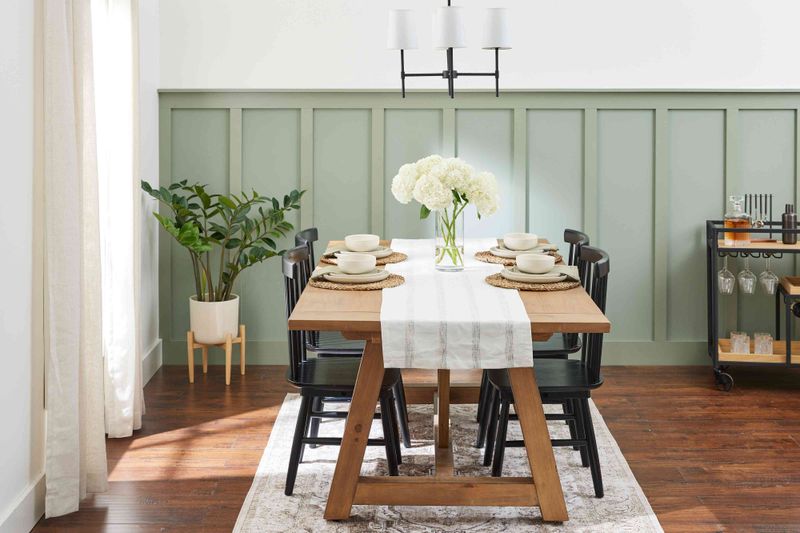
Wall paneling adds instant architectural character that flat walls simply can’t match. From traditional beadboard in bathrooms to dramatic full-wall paneling in dining rooms, these details create texture, dimension, and a sense of craftsmanship.
Modern interpretations have moved beyond colonial-style wainscoting to include board and batten, picture frame molding, and even geometric patterns for contemporary spaces. The beauty of paneling lies in its versatility paint it to match your walls for subtle texture or choose a contrasting color to create a bold statement.
Height matters with wall treatments. Traditional wainscoting typically stops at chair-rail height (about 32-36 inches), while taller treatments can reach two-thirds up the wall or even to the ceiling. DIY-friendly options using MDF boards have made this classic detail accessible even to budget-conscious homeowners.
6. Coordinated Light Fixtures
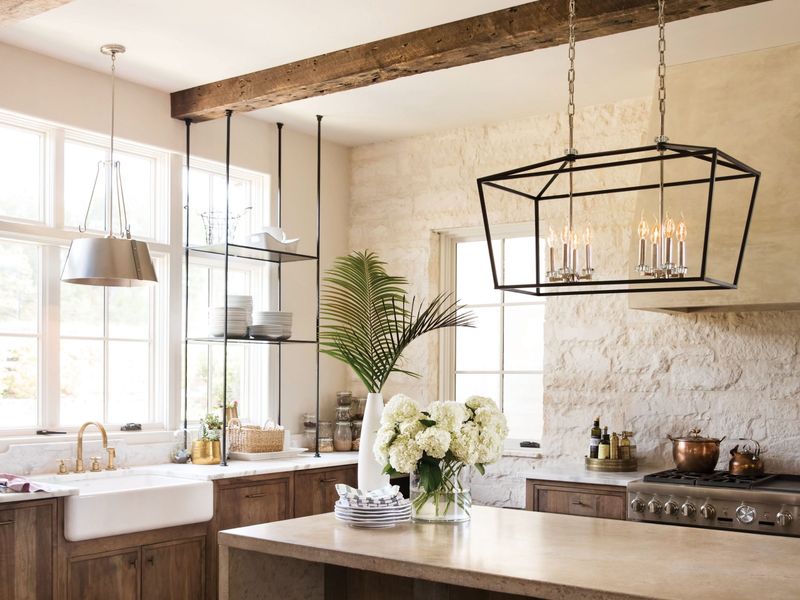
Matching your lighting creates an intentional, designer-planned feel throughout your home. This doesn’t mean identical fixtures everywhere rather, it’s about choosing lights that share common elements like finish, style, or materials that visually connect your spaces.
When selecting fixtures, consider how they’ll look from different viewpoints. Can you see your entryway pendant from the living room? If so, they should harmonize. Mixing metals can work beautifully when done purposefully perhaps all your fixtures feature both brass and black elements, creating a cohesive thread.
Scale matters tremendously with lighting. Fixtures should be proportional to the room and furniture beneath them. A dining chandelier should be approximately one-half to two-thirds the width of your table, while pendants should hang 30-36 inches above countertops for proper proportion. These thoughtful relationships create visual harmony that elevates your entire home.
7. Upgraded Faucet Designs
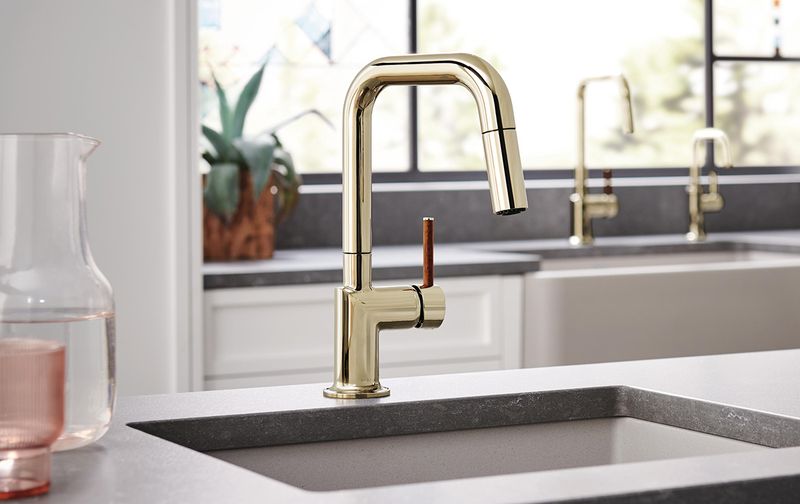
Faucets are the jewelry of your kitchen and bathrooms functional necessities that can also be stunning design statements. Replacing builder-grade fixtures with architectural designs in premium finishes creates an immediate luxury upgrade without major renovation.
Quality matters tremendously here. A well-made faucet operates smoothly, has substantial weight, and maintains its finish for years. Look for solid brass construction with ceramic disc valves for longevity. Current trends favor warm metals like brushed brass and copper, though classics like polished nickel and matte black remain perennially stylish.
Consider your sink configuration when selecting styles. Wall-mounted faucets create dramatic modern statements but require specific plumbing. Bridge faucets with separate hot and cold handles bring vintage charm to farmhouse sinks. For contemporary spaces, single-handle designs with pull-down sprayers offer both sleek aesthetics and practical functionality.
8. Decorative Ceiling Medallions

If you want to add instant architectural history to a plain ceiling, decorative medallions create focal points that frame chandeliers and pendant lights beautifully. These ornamental discs come in countless styles from simple rings to elaborate Victorian patterns.
Installation is surprisingly simple most medallions are lightweight polyurethane that can be attached with construction adhesive and painted to match your ceiling or trim. For extra drama, try painting the medallion in a contrasting color or metallic finish. The right size matters: generally, your medallion should be approximately the same diameter as your light fixture.
Beyond the dining room, consider medallions in unexpected places like bedrooms or even bathrooms. They work particularly well in rooms with high ceilings where they help draw the eye upward and create visual interest in otherwise overlooked spaces. This small detail adds a layer of sophistication that makes rooms feel thoughtfully designed.
9. Textured Wall Finishes
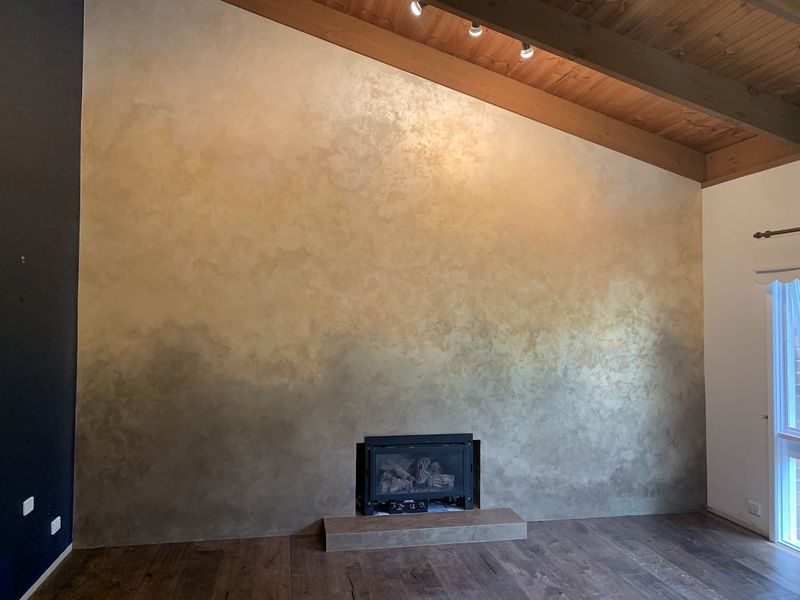
Flat paint is just the beginning of what your walls can be. Textured finishes like Venetian plaster, limewash, or subtle hand-troweled effects add dimension that transforms flat surfaces into artistic elements with depth and character.
Modern textured finishes have moved beyond the dated popcorn ceilings and heavy textures of past decades. Today’s options create subtle movement that catches light beautifully throughout the day. Limewash paints create soft, cloudy variations perfect for Mediterranean or European-inspired spaces. Venetian plaster brings a lustrous, almost marble-like quality to accent walls.
Even simple techniques like color washing or rag rolling can add interest without overwhelming a space. The beauty of textured walls is their ability to hide imperfections while adding visual complexity. Consider using these finishes in smaller spaces like powder rooms or dining rooms where their impact can be appreciated up close.
10. Solid Core Interior Doors
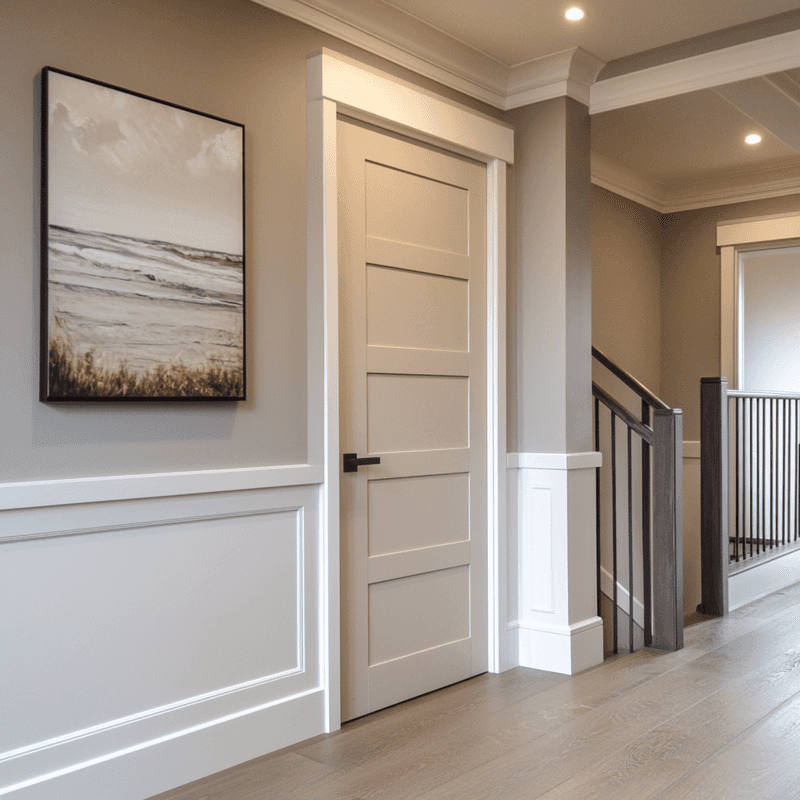
The difference between hollow and solid doors is immediately apparent both visually and acoustically. Solid core doors have substantial weight that signals quality the moment you open or close them – they move with a satisfying heft and close with authority.
Beyond the premium feel, solid doors provide significant sound insulation between rooms. This makes them ideal for bedrooms, home offices, and bathrooms where privacy matters. They also resist warping over time, maintaining their proper fit within door frames for decades.
When selecting doors, consider how they complement your home’s architecture. Shaker-style five-panel doors suit modern farmhouse and transitional homes, while flush doors work in contemporary spaces. For maximum impact, replace standard hollow doors with solid versions but keep the same style throughout your home for visual consistency. This upgrade costs more initially but adds lasting value.
11. Luxurious Window Treatments
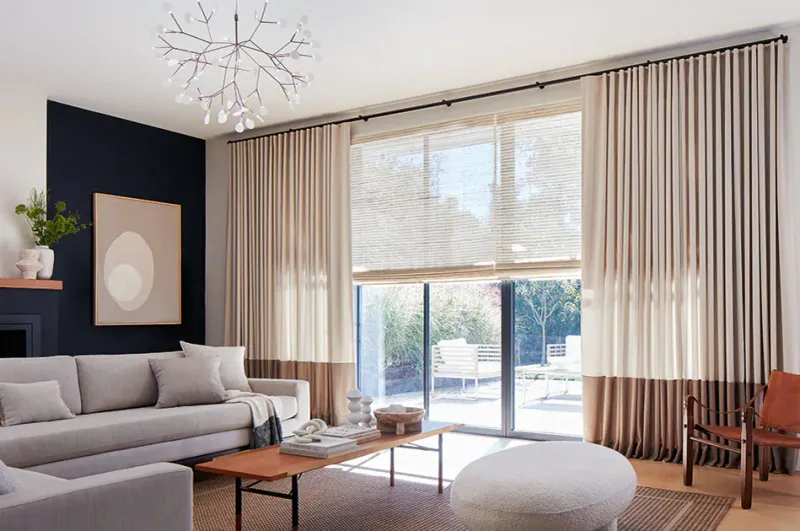
Windows deserve thoughtful dressing that enhances both functionality and aesthetics. Quality window treatments frame views, control light, and add necessary softness to rooms dominated by hard surfaces.
Layer different elements for maximum impact and flexibility. Start with practical blinds or shades for privacy and light control, then add side panels that extend to the floor, even on shorter windows. This designer trick makes ceilings appear higher and windows larger. Mounting hardware near the ceiling rather than directly above the window frame visually expands your windows.
Fabric quality makes all the difference in how window treatments hang and move. Natural materials like linen, cotton, and silk create beautiful drape and texture. For a luxurious look without custom prices, ready-made panels can be enhanced with trim, banding, or custom headers. Even simple white panels look expensive when they puddle slightly on the floor instead of stopping exactly at floor level.
12. Natural Stone Countertops
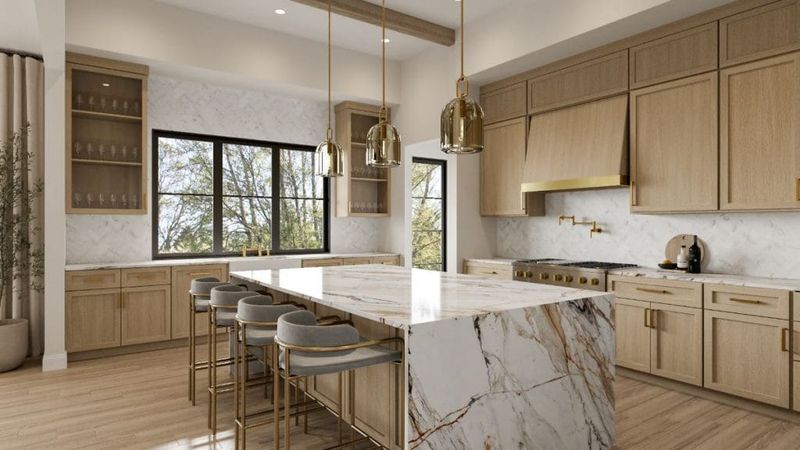
Few materials bring the organic beauty and timeless quality of natural stone to kitchens and bathrooms. Each slab tells a geological story with unique patterns that can’t be perfectly replicated in manufactured materials.
Marble creates undeniable luxury with its distinctive veining, though it requires more maintenance than harder stones. Granite offers exceptional durability with dramatic movement in colors ranging from subtle whites to bold blues and greens. For contemporary spaces, quartzite provides marble-like aesthetics with better stain resistance, while soapstone brings understated elegance with its soft, matte finish that develops character over time.
When selecting stone, view full slabs rather than small samples to understand the overall pattern and movement. Consider how the veining will layout across your specific countertop configuration. Upgraded edge profiles like mitered edges that wrap down the cabinet face create substantial thickness that signals quality craftsmanship.
13. Custom Built-Ins
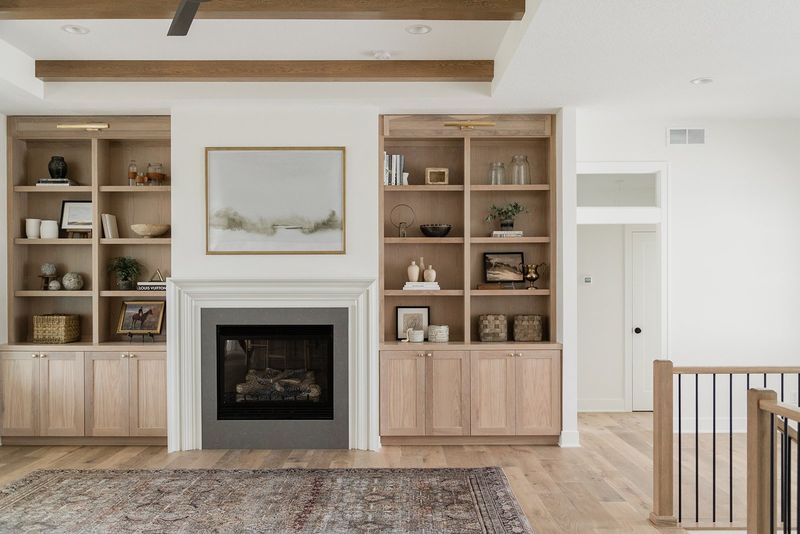
Nothing says ‘this home was thoughtfully designed’ quite like custom built-ins that maximize both functionality and style. Unlike freestanding furniture, built-ins create architectural interest while solving storage challenges perfectly tailored to your space.
Window seats with hidden storage, bookshelves flanking fireplaces, or media walls that conceal equipment while displaying treasures – these custom elements transform ordinary rooms into distinctive spaces. The key to successful built-ins is making them look intentional rather than afterthoughts. Extend them to the ceiling when possible and incorporate architectural details that match your home’s trim style.
Consider unexpected locations beyond the obvious living room mudroom bench seating, primary bedroom headboard walls with integrated nightstands, or dining room buffets with glass-front upper cabinets. These investments typically return their value when selling because they create memorable features that distinguish your home from others on the market.
14. Designer Switch Plates
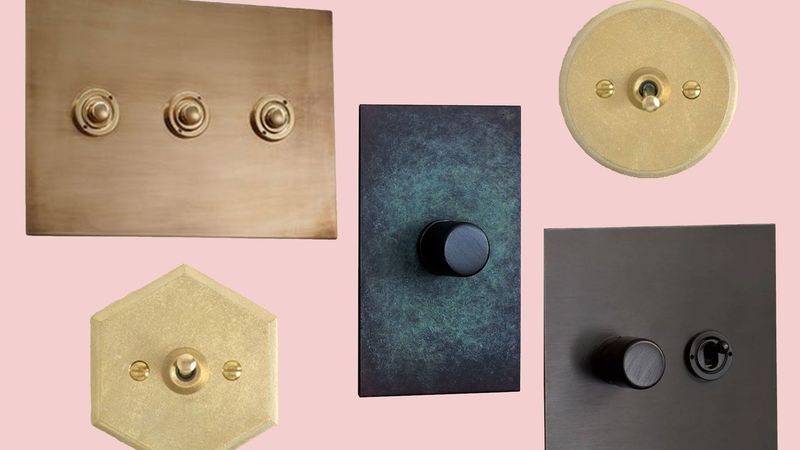
Switch plates are the most frequently touched elements in your home, yet they’re often overlooked in design plans. Upgrading from standard plastic plates to decorative versions creates subtle luxury that registers subconsciously when entering a space.
Materials make all the difference here. Solid brass plates develop beautiful patinas over time, while hand-hammered metals add artisanal character. For contemporary spaces, sleek screwless designs create minimalist sophistication. Even simple ceramic plates feel more special than builder-grade plastic versions.
Consistency matters with these small details use the same style throughout connected spaces for a cohesive look. Consider how they’ll complement your door hardware and cabinet pulls. For ultimate luxury, specialty plates with USB ports, dimmers, or smart controls combine beautiful form with enhanced function. This small upgrade typically costs $15-30 per plate but creates those finishing touches that distinguish thoughtfully designed homes.
15. Elegant Door Handles
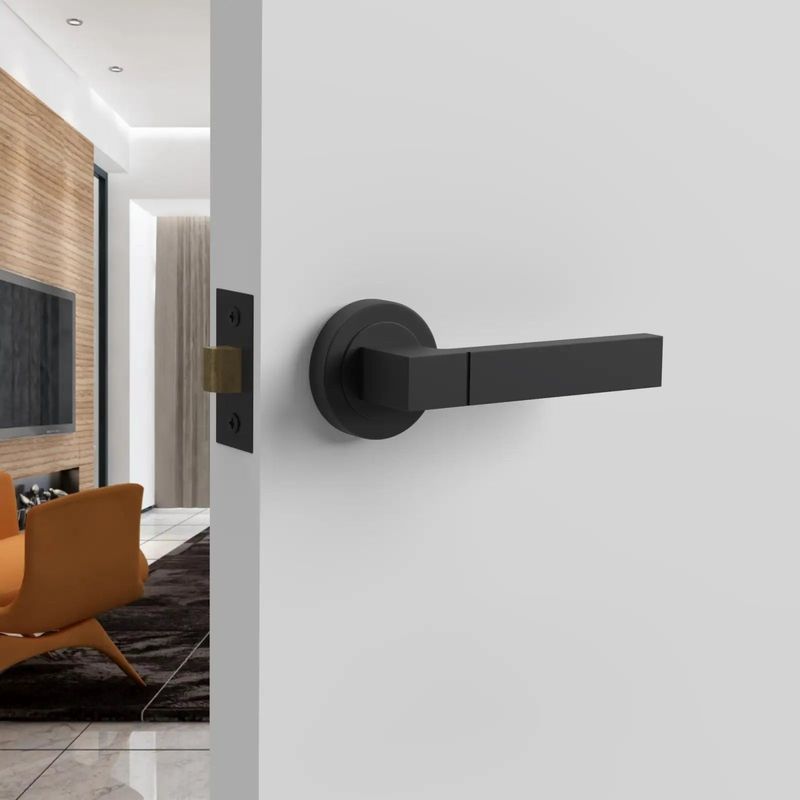
Door hardware is literally at your fingertips dozens of times daily, making it both highly visible and frequently interacted with. Upgrading to substantial, well-crafted handles and knobs instantly elevates the perceived value of your entire home.
Weight provides the first clue to quality premium hardware has satisfying heft that signals craftsmanship. Solid brass mechanisms operate smoothly for decades, unlike lightweight alternatives that loosen over time. For contemporary spaces, sleek lever handles in matte black or brushed nickel create clean lines, while crystal or porcelain knobs bring vintage charm to traditional homes.
If full replacement isn’t in your budget, focus on the most visible doors first entry doors, primary bedroom, and main bathroom. Match your door hardware finish to nearby cabinet hardware and light fixtures for a coordinated look. This seemingly small detail creates a subliminal impression of quality and attention to detail throughout your home.
16. Layered Lighting Plan
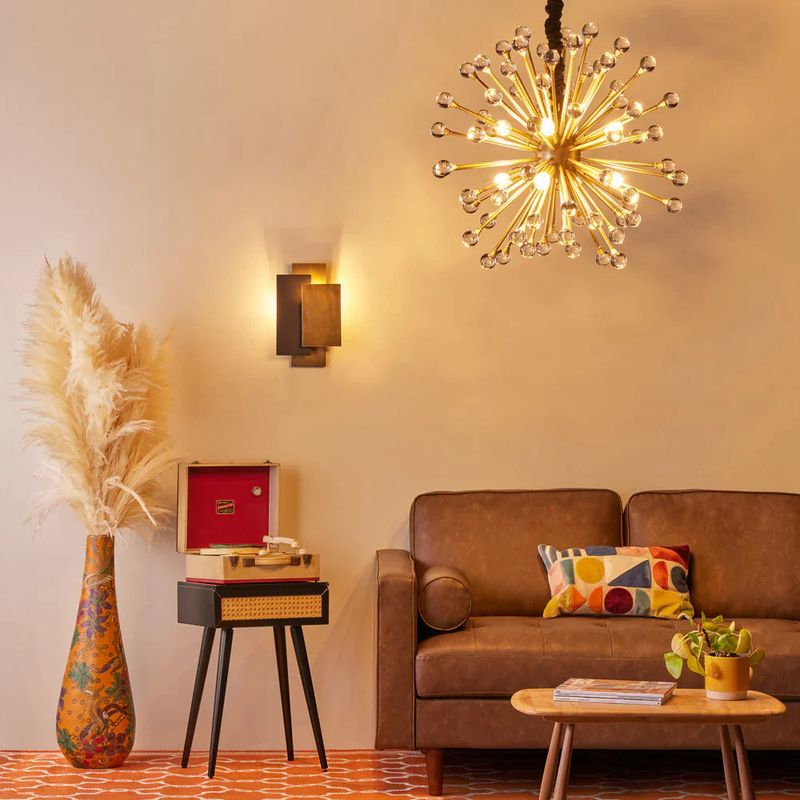
Professional designers always incorporate multiple light sources at different heights to create depth, dimension, and functionality. A well-planned lighting scheme includes ambient, task, and accent lighting working together to highlight architectural features and support various activities.
Ambient lighting provides overall illumination through ceiling fixtures, recessed lights, or wall sconces. Task lighting focuses bright, directed light where you need it under-cabinet lights in kitchens, reading lamps beside chairs, or vanity lighting in bathrooms. Accent lighting creates drama by highlighting artwork, architectural features, or plants through wall-washers, picture lights, or directional recessed fixtures.
Height variation creates visual interest combine overhead lighting with mid-level sconces and table lamps. Putting key fixtures on separate switches or dimmers allows customized lighting scenes for different moods and activities. This thoughtful approach eliminates harsh shadows while creating the warm, inviting atmosphere that distinguishes professionally designed homes.
17. Unique Tile Patterns
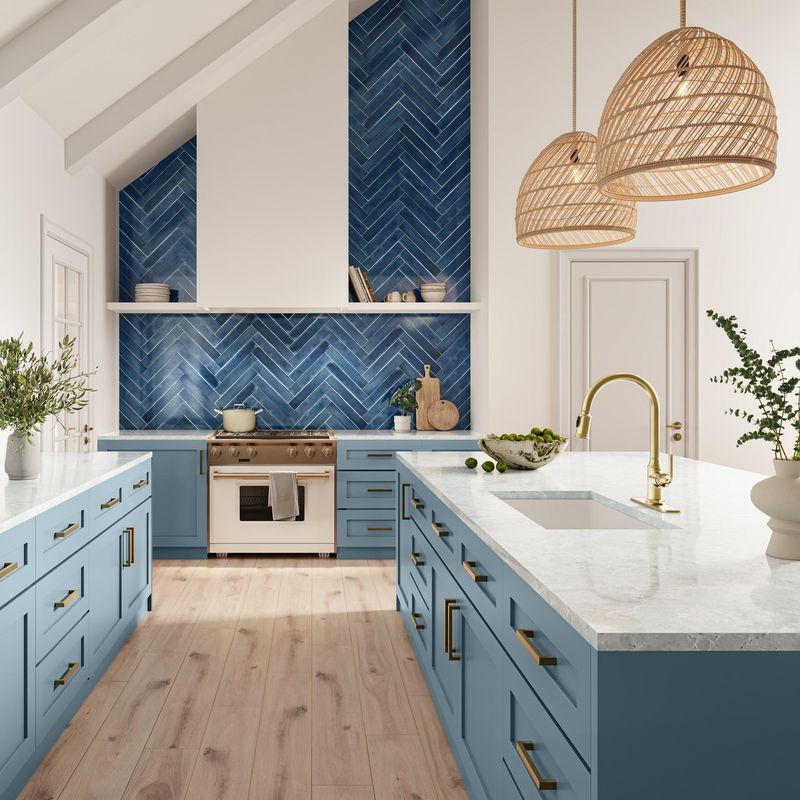
Standard grid layouts are just the beginning of what’s possible with tile. Creative installation patterns transform basic materials into custom-looking features that showcase your personal style and attention to detail.
Herringbone arrangements create dynamic movement perfect for backsplashes or shower walls. Basketweave patterns bring classic elegance to bathroom floors. Even simple subway tiles become distinctive when installed in unexpected configurations like vertical stacks or 1/3 offsets instead of traditional running bonds.
Color and grout choices dramatically impact the final look. Dark grout with white tile emphasizes pattern geometry, while matching grout creates seamless sophistication. For maximum impact, consider statement patterns in smaller areas like powder rooms or kitchen backsplashes where they won’t overwhelm the space. These installation variations often cost little to no additional money but create custom-looking results that distinguish your home from builder-basic designs.
18. Contrasting Trim Colors
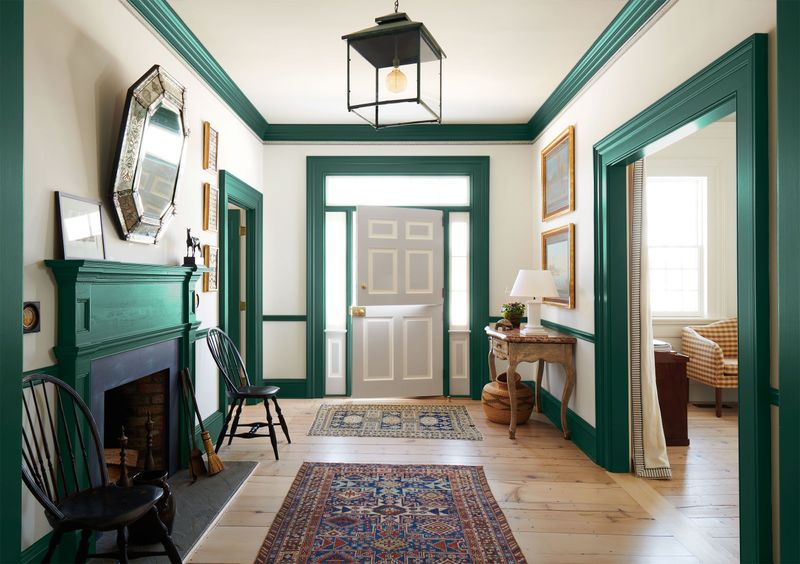
White trim has dominated home design for decades, but contrasting colors create architectural definition that makes your home’s details pop. Painting trim, doors, and moldings in colors that stand out from your walls highlights these features as intentional design elements.
For subtle sophistication, try trim a few shades darker than your walls cream walls with taupe trim, for example. Bold statements come from high-contrast combinations like navy trim against white walls or black window frames in an otherwise neutral room. This approach particularly benefits homes with architectural details worth highlighting.
When using contrasting trim, consistency becomes crucial. Carry your chosen trim color throughout connected spaces for a cohesive look, including door frames, window casings, crown moldings, and baseboards. This designer technique costs nothing more than standard painting but creates distinctive spaces that look professionally planned rather than builder-basic.
19. Stylish Baseboards
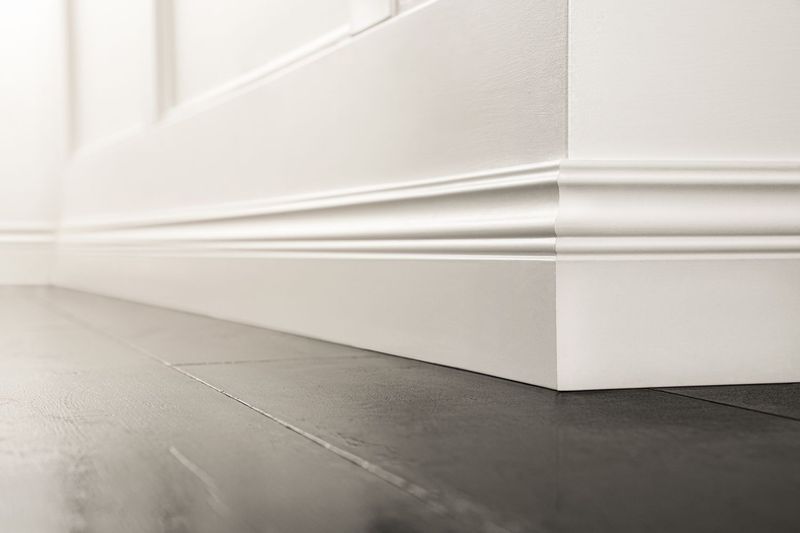
Baseboards might seem insignificant, but these humble trim pieces create crucial transitions between walls and floors while protecting walls from vacuum bumps and furniture scuffs. Upgrading from builder-basic narrow moldings to more substantial profiles instantly elevates your home’s architectural presence.
Height makes the biggest impact taller baseboards (5-7 inches) create more substantial visual weight and architectural importance than standard 3-inch versions. Adding a quarter-round shoe molding at the floor junction enhances the profile while hiding any uneven gaps. For traditional homes, profiles with multiple steps or curves bring period-appropriate detail, while simple rectangular boards with clean lines suit contemporary spaces.
When installing new flooring, take the opportunity to upgrade baseboards simultaneously. Paint them in semi-gloss or satin finish for durability and easier cleaning. This relatively inexpensive upgrade (typically $2-5 per linear foot installed) creates significant visual impact throughout your entire home.
20. Rich Wood Flooring Finishes
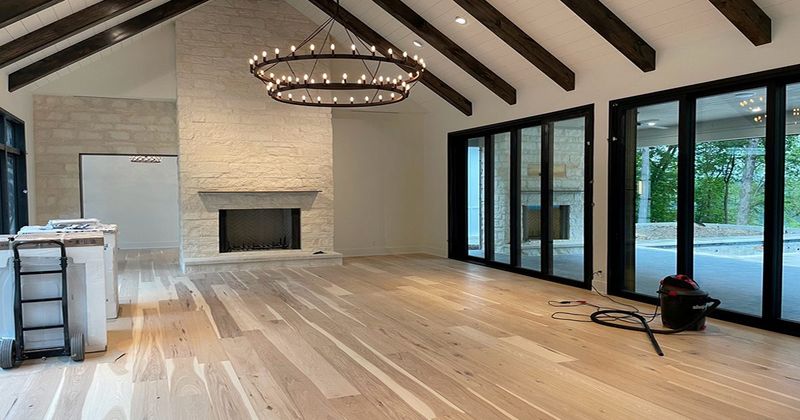
The finish on your wood floors dramatically impacts both their appearance and longevity. Moving beyond basic semi-gloss polyurethane opens possibilities for distinctive finishes that showcase wood’s natural beauty while complementing your overall design aesthetic.
Matte and satin finishes have gained popularity for their ability to hide small scratches and dust while creating sophisticated, modern looks. For rustic or farmhouse styles, hand-scraped or wire-brushed textures bring character that flat finishes can’t match. Oil-based finishes penetrate the wood rather than sitting on top, creating rich depth that highlights grain patterns beautifully.
Color trends have moved beyond traditional medium browns to include whitewashed finishes for coastal vibes, gray tones for contemporary spaces, and even dramatic dark ebony stains for formal rooms. When selecting finishes, consider durability needs in high-traffic areas and how the color will coordinate with your overall palette and furnishings.



